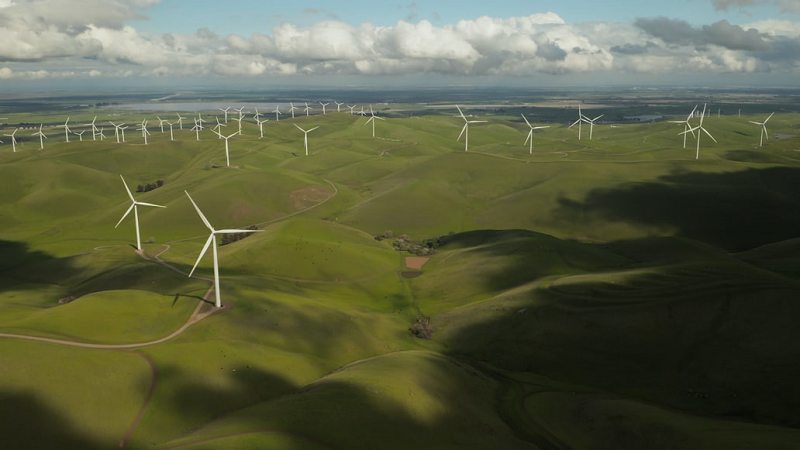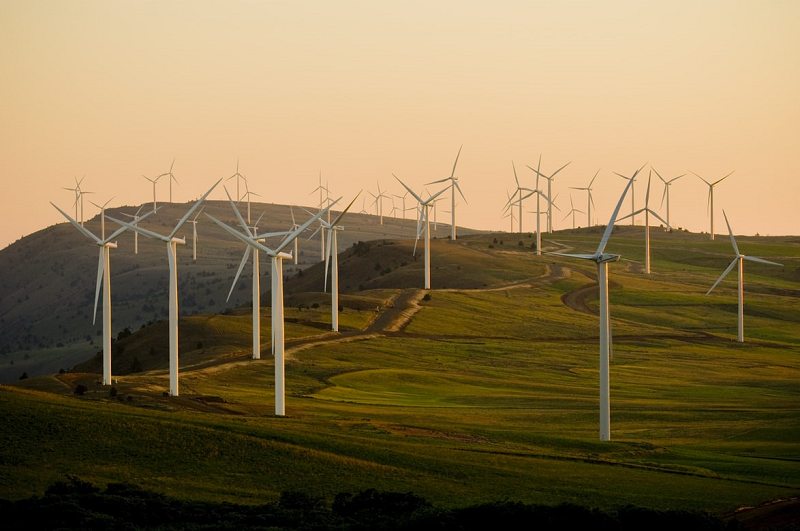Wind Power in Germany
Onshore wind power has become one of Germany's most important power sources as part of the country's shift to low-carbon energy generation.
For many years, Germany has led Europe in the installation of onshore wind power capacity, is by far the largest market in the area, and is a global technology leader. However, the national business has been struggling in recent years, with domestic expansion reaching its lowest point in two decades in 2019. New turbine development has resumed, but in 2021 it remained at the same level as 10 years before, well below what is required to meet the new government's ambitious renewable energy ambitions. By the end of 2021, there were 28,230 onshore turbines in operation across the country, with a combined capacity of around 56 gigawatts (GW). The year 2017 had the most capacity rise to yet, with a gross expansion of roughly 5.3 GW. After that, expansion slowed to less than 1 GW in 2019 and 1.6 GW in 2021. Industry organizations and the new economy and climate minister, Robert Habeck, argue that the figure must at least treble by 2030 if the country is to achieve an 80 percent renewable energy mix.
Several causes contributed to the expansion's demise after 2017, although regulatory issues are largely seen as the primary culprit. According to research by energy sector advocacy organization BDEW, the major cause of the dip was a reduction in the number of permits awarded for onshore wind turbines, which fell by 70% in three years. According to wind power industry associations, the typical turbine takes four years from building an application to start-up, and roughly 10 GW of turbine capacity was stalled in licensing processes in 2021. They noted that loosening rules might put up to five GW back on track for development right away.

Turbine manufacturers and wind farm operators face additional challenges because of mandatory minimum distances from residential areas and aviation infrastructure, as well as lawsuits filed by citizen movements and environmental groups, despite recent polls indicating that Germans are overwhelmingly in favor of further expansion. In June 2020, the economy ministry (BMWi) and the governments of the 16 federal states reached a deal that addressed some of the most vexing hurdles to wind power by essentially leaving it up to the states to decide on minimum distance restrictions. Industry organizations have criticized strict minimum distances, such as the 10H-rule in Bavaria, which states that the distance to residential areas must be at least ten times the turbine's height, for compromising energy security and competitiveness.
Despite the challenges of turbine building, onshore wind power output has been continuously increasing in recent years, but it experienced a setback in 2021 due to unfavorable weather conditions and stagnant capacity increase. Onshore wind power supplied over 92 terawatt-hours (TWh) of electricity to the grid in 2021, accounting for slightly under 16 percent of total power generation, making it the most major renewable energy source. Wind power became Germany's main power source for the first time in 2019 when it combined with offshore turbines, which produced 25 TWh (4 percent of total) in 2021. Onshore wind power generated over 20% of Germany's net power generation in 2020.
In 2021, turbines with a capacity of over 3.9 MW, a hub height of 140 meters, and a rotor diameter of 133 meters were added on average. Over the last two decades, average turbine heights have more than doubled, implying that new installations may produce more electricity. A single contemporary onshore turbine may serve up to 6,000 people with electricity. Electricity generation has gotten much cheaper over time as a result of more consistent feed-in and greater grid compatibility of new installations. According to the wind power organization BWE, average rates for a one-kilowatt hour (kWh) of electricity were just over 4 cents by mid-2021, depending on the location and size of the turbine.

The great majority of wind turbines have so far been constructed in Germany's northern part, where favorable wind conditions also aided the industry's early development in the 1990s. Wind power growth in central and southern Germany, on the other hand, has accelerated in recent years, thanks to increased turbine efficiency, which has opened up regions with lower average wind conditions further inland. However, expansion rates in such areas are still considerably behind those in the northern coastal regions. In the end, the new administration wants every German state to devote at least 2% of its geographical area to wind energy generation.
Germany's Federal Network Agency (BNetzA) designated the country's coastal areas and hinterland as a "grid expansion area," with new wind power installations limited at around 60% of prior levels to accommodate for lagging grid expansion. In the meanwhile, higher power outputs and greater running hours per turbine have compensated for decreased financial support rates, allowing formerly undesirable areas to be harnessed.
In February 2021, wind power delivered approximately 21 billion kWh of electricity, a new monthly record. The extremely windy year, in which electricity demand was reduced for several months owing to the coronavirus epidemic, was also the first time in the country's history that renewables surpassed fossil fuels in power generation.
Wind power output in Germany often peaks during the winter months, somewhat compensating for decreased solar power intake at that time of year. However, during the colder and darker months of the year, when the great majority of Germany's power demand must still be met by conventional power plants, the problem of wind power's unpredictability becomes apparent.
Despite difficult domestic conditions, Germany remained one of the world's largest wind power markets. According to the GWEC, it placed in third place after China and the United States in 2018, with 5% of new installations and just under 10% of overall installations. According to BWE, a German wind power advocacy organization, China’s and the US’ market share was twice as large as Germany's share in overall installations, with 20 percent of worldwide installations coming from German companies - and that ratio would rise to 40 percent if China's highly protected market is eliminated.
